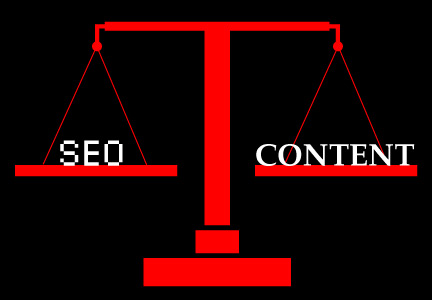
Balancing Search Engine Optimization and Blog Content

With the opportunity for frequently updatable content, blogs have become powerful tools for search engine optimization, enabling businesses to get found for the right reasons. If your website is the platform to communicate your core messages, products, and services, then your blog is the place to tell other, more in-depth stories about your brand. Planning your blog content actually starts with establishing and refining your SEO key phrases. If you want to get found, the big question is: how are customers searching for you in Google? These key phrases should then inform the types of articles that appear on your blog. It’s all about balancing what you want to say with what people are searching for. Read more to learn about the steps and features of a sound SEO strategy.
1. Determining Your Keywords and Phrases
SEO keywords and phrases can be created once you understand who you are as a business and how customers are referring to you in their own natural language. Sometimes how you think about your business is not how customers are thinking of you. It’s important to put yourself in your audience’s shoes to ensure that you are targeting the right people. If you are currently optimized for a set of keywords, then it’s good to start there and figure out how you are ranking on them. Chances are, the keywords could be refined and expanded upon. The best key phrases are ones that have a high search frequency with low competition, making them easy to rank on. For example, we’ve found a subtle shift in keywords such as “organic” vs. “natural” vs. “green” can significantly increase your chances of being found. At MSLK, we use tools to evaluate these nuances and help find and shortlist the phrases your customers are using the most.
2. Implementation
The shortlist of phrases are now to be used over and over as tags and within the blog posts themselves. This is why it is so important to make sure your content strategy aligns with these key phrases. As you tag each post with the appropriate keywords, a tag cloud will be generated, showing the words that are used most frequently. This is a feature for search engines enabling articles with those tags to be found more easily, which increases your rank.
This SEO strategy goes beyond blogging and should work its way into all facets of your online presence. Your newly refined set of key phrases should be utilized in page titles, copy, and descriptions on your website and social media platforms.
3. Frequency of content
Setting goals for the amount of blog posts that should be written per month is a critical part of any content plan. There is nothing worse than a blog that has remained dormant for six months. Blogs are about the here and now, so it is important to post content frequently and consistently. This keeps your readers interested and grows your following, and is rewarded by search engines, because fresh relevant content will raise page ranking.

